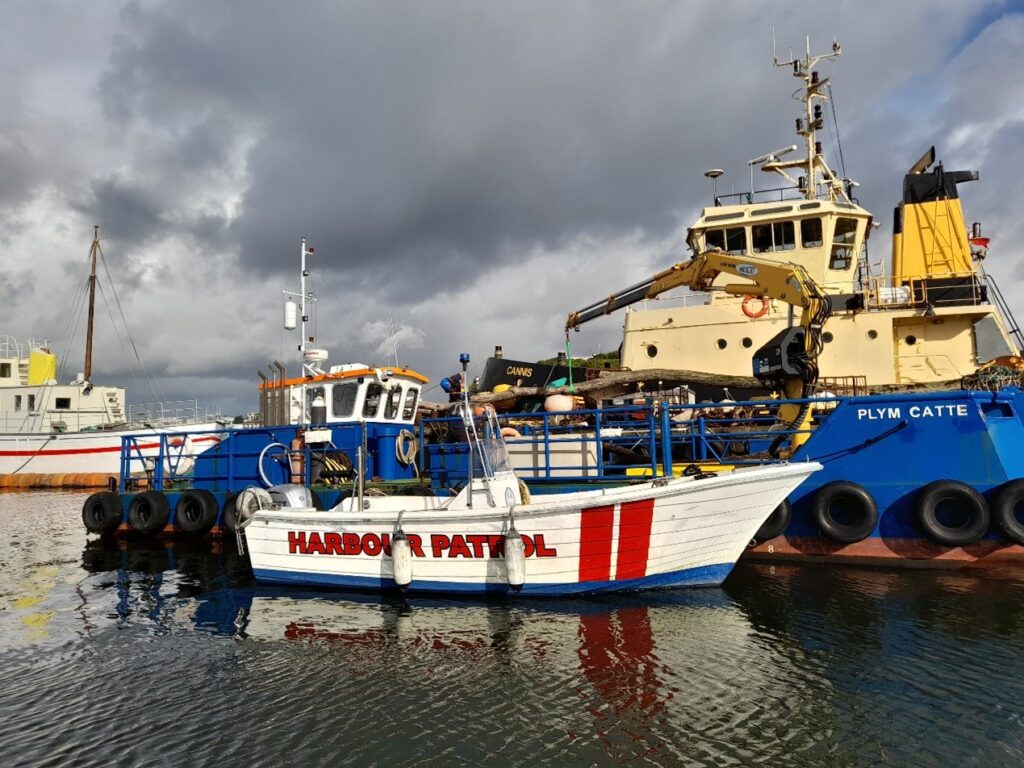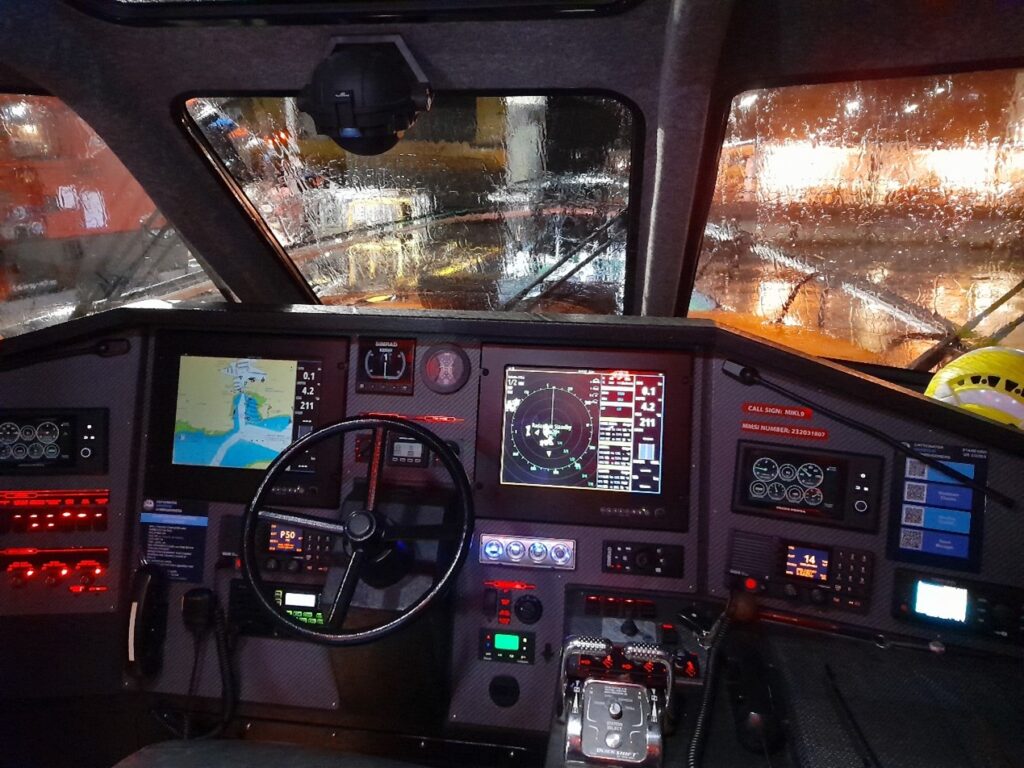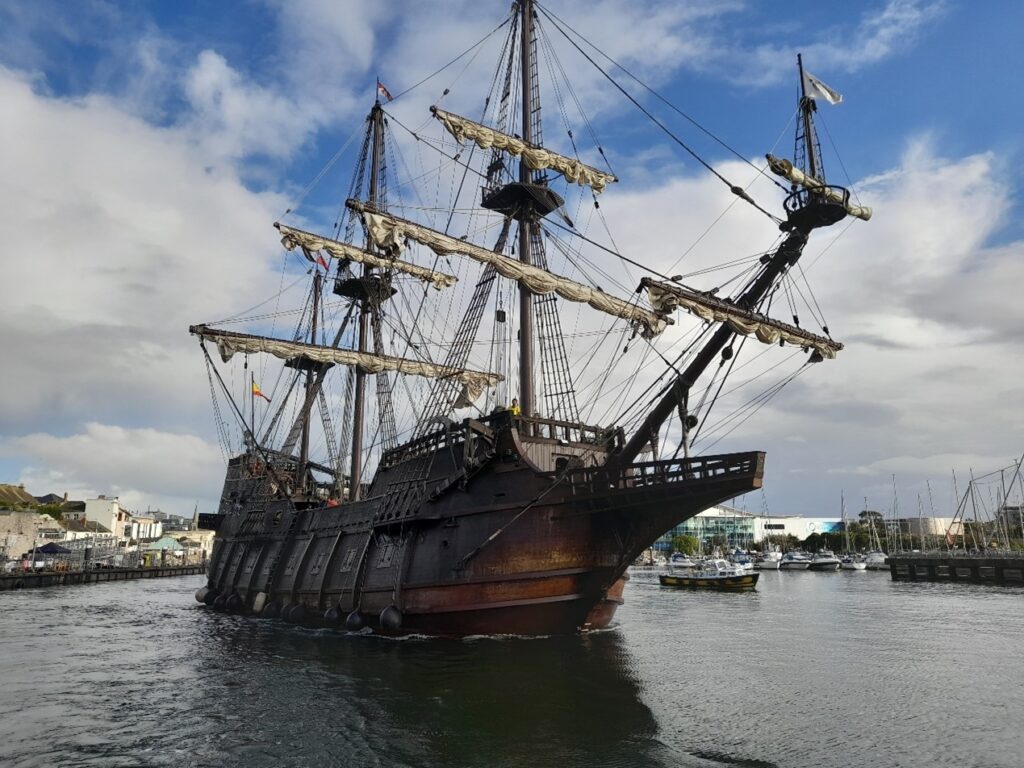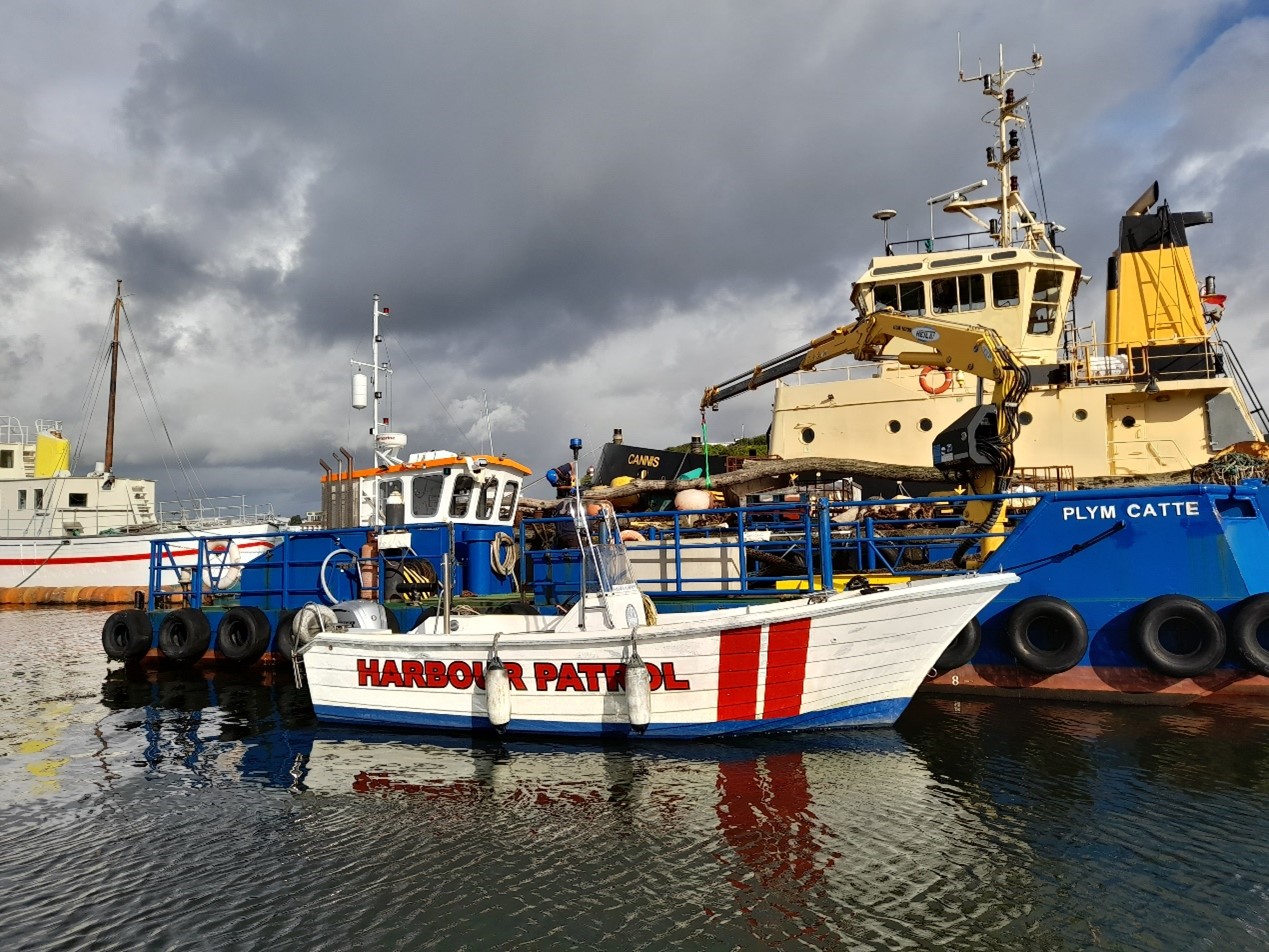By Sam Balderson NMP Head Ranger
Last month I was able to join up with the Cattewater Harbour Commissioners (CHC) team for 24 hours to help gain some insight into their role as a Statutory and Competent Harbour Authority for the Port of Plymouth. Of particular interest to me was how they patrol the area and how they engage with water users as well as seeing the work of the Pilot boats and the people that work on them.
The visit started with a patrol of the Cattewater and Hooe Lake with Emma Maunder, Harbour Operative onboard Storm Petrel. The Harbour patrol team undertake a patrol every morning to check on the security of boats on the moorings that the CHC manage and maintains as well as look for anything that may pose a navigation hazard, such as floating tree branches or boats that have broken free from other private moorings.

After the patrol, I spent some time with the Harbour Master Capt. Richard Allan who took the time to give me a really good overview of the operations of the Port of Plymouth, the plans for the future and how these fit with the vision for the Plymouth Sound National Marine Park (PSNMP).
Plymouth Sound is a very busy stretch of water with lots of different stakeholders and user groups, which look set to expand in the coming years. We spoke about the importance of making sure that all these different water users are able to access the water and interact safely and the role of CHC in ensuring this. The CHC have shown a strong commitment to environmental initiatives and Richard was able to talk me through some of his ideas and proposals for future improvements.
In the afternoon I was able to accompany the whole CHC team on a beach clean they had organised with a team from Associated British Ports (ABP) to celebrate the Great British Beach Clean Week. We all went over to Mount Batten Beach on the ferry and cleaned the entire stretch of shoreline.
In the evening I joined up with the crew of the pilot boat, Stamford to go out on operations and find out more about pilotage in Plymouth Sound. Stamford is a very modern vessel that was designed to have big improvements in fuel economy and therefore reduced CO2 emissions.

At 8:45pm in the pitch dark of a rainy evening, we picked up the pilot Capt. Julian Parkin and dropped him on board a fuel tanker that required pilotage to sea from Cattedown Wharves and once this journey had been safely completed we picked up Julian and put him on a cargo vessel carrying stone that was waiting at sea to be piloted into Cattedown. These operations were completed by 11:30pm. It was a fascinating insight into the role of the pilots who provide a 24/7 service to provide safe passage in and out of the port for any vessel over 50m or at the discretion of the Harbour Master for smaller vessels. As Richard Allan had described to me earlier in the day, pilotage is one of the oldest maritime professions but it is not very well known by the general public. The Pilots local knowledge of the port is essential to the safe passage of ships, which ensures the safety of life at sea and protects the environment.
The following morning I joined the crew of Stamford for one of the more unusual pilotage tasks that they had been involved in. El Galeon a full-size replica of a 17th-century Spanish galleon and floating museum had completed its stay in Plymouth and needed a Pilot to take it out of the port.

Capt. Steve Woodfinden was the Pilot for the job and completed it without any issues. Just another day in the life of a CHC pilot.
Many thanks to the Cattewater Harbour Commissioners team for giving me the opportunity to learn more about the complex operations of the Cattewater, Port of Plymouth and Plymouth Sound.


